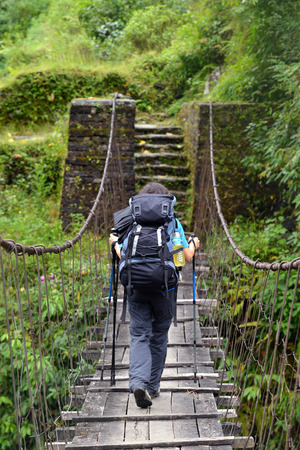Introduction to Walking Festivals in the UK
Walking festivals have become a cherished tradition throughout the United Kingdom, seamlessly blending the appreciation of the countryside with the celebration of local heritage and community spirit. Tracing their origins to rural gatherings and civic initiatives from decades past, these festivals were initially conceived as ways to encourage outdoor activity, promote regional history, and strengthen community bonds. Today, they have flourished into vibrant events that draw participants of all ages and backgrounds, inviting everyone to explore both hidden gems and well-trodden paths across the British landscape. As their popularity continues to grow, walking festivals are now recognised as key fixtures in the UK’s cultural calendar—offering not just physical exercise but also opportunities for social connection and deeper engagement with Britain’s rich tapestry of history, folklore, and natural beauty.
2. Historical Roots and Traditions
Walking as a pastime has deep historical roots in the United Kingdom, woven into the very fabric of British society. The act of walking for pleasure or communal purpose can be traced back centuries, reflecting both rural traditions and urban developments. In the 18th and 19th centuries, walking became a symbol of social engagement and exploration, with famous writers such as William Wordsworth and John Keats drawing inspiration from long country walks. Over time, this simple activity evolved into organised events that brought communities together, celebrated local heritage, and promoted physical well-being.
The Role of Traditional Walking Events
Traditional walking events have served as more than just leisure activities; they often played pivotal roles in marking seasonal changes, honouring local customs, or commemorating historical moments. For instance, many villages and towns across England, Scotland, and Wales host annual “beating the bounds” walks—a practice dating back to medieval times where parish boundaries are walked by locals to reinforce community identity.
Key Historic Walking Customs
| Event | Region | Origin/Significance |
|---|---|---|
| Beating the Bounds | England & Wales | Marking parish boundaries through communal walking ceremonies since medieval times |
| Pilgrimage Routes (e.g., St Cuthbert’s Way) | Northern England & Scotland | Religious journeys undertaken on foot to sacred sites |
| The Yorkshire Three Peaks Challenge | Yorkshire Dales | Established in the Victorian era as a test of endurance over three iconic peaks |
| Beltane Walks | Scotland | Celtic tradition marking the arrival of summer with communal hill walks |
Shaping Contemporary Festivals
The legacy of these customs is evident in today’s walking festivals across the UK. Modern events often incorporate elements of local folklore, historical storytelling, and traditional routes, creating a bridge between past and present. As festival organisers draw upon these rich traditions, they foster a sense of continuity and belonging among participants. This enduring connection to history not only enhances community spirit but also highlights the UK’s longstanding respect for its landscapes and cultural heritage.
![]()
3. Community Engagement and Local Pride
Walking festivals across the UK are more than just opportunities to explore scenic routes; they serve as powerful catalysts for community engagement and local pride. By bringing together residents, seasoned ramblers, and visitors from near and far, these festivals foster a vibrant sense of belonging. Participants share stories, exchange knowledge about local history, and form connections that often last well beyond the event itself.
Encouraging Social Interaction
One of the defining features of historic walking festivals is their ability to break down social barriers. Walks are typically organised in groups that encourage conversation and collaboration, whether navigating ancient pathways or enjoying post-walk gatherings at village halls or local pubs. This inclusive atmosphere invites people of all ages and backgrounds to join in, making it easier for newcomers to feel part of the community.
Promoting Local Pride
Local communities take great pride in showcasing their heritage through themed walks that highlight unique aspects of their region—be it folklore, architecture, or natural beauty. Volunteers play a crucial role, acting as guides and ambassadors who are eager to share their passion for their hometown. This collective effort not only strengthens community bonds but also instils a deep sense of pride among residents, who see their traditions and landscapes appreciated by a wider audience.
Uniting Residents and Visitors
The welcoming spirit at these festivals ensures that both locals and visitors feel valued. Whether attending a guided walk along Hadrian’s Wall or participating in a storytelling evening in the Lake District, everyone is encouraged to immerse themselves in the local culture. Such shared experiences promote mutual understanding, boost regional identity, and leave lasting memories for all involved.
4. Celebrating Countryside and Conservation
Walking festivals across the UK are much more than communal outings; they serve as pivotal platforms for showcasing the nation’s diverse natural landscapes. From the rolling hills of the Yorkshire Dales to the rugged coastlines of Cornwall, these festivals immerse participants in breathtaking scenery while fostering a deep appreciation for Britain’s rural heritage. The connection between walking festivals and the countryside is intrinsic—each event is an invitation not only to explore but also to respect and protect the environment.
Many organisers collaborate closely with local conservation groups, landowners, and national parks authorities to ensure routes highlight unique habitats and encourage responsible behaviour. By integrating guided walks with educational sessions, festivals actively raise awareness about biodiversity, sustainable land management, and the threats posed by climate change. This partnership between communities and conservation bodies ensures that walkers become advocates for environmental stewardship as they traverse ancient footpaths and protected areas.
Environmental Initiatives at Walking Festivals
Festival Name |
Conservation Focus |
Key Activities |
|---|---|---|
| South Downs Way Walks | Chalk grassland preservation | Guided wildlife walks, habitat restoration workshops |
| Cotswold Outdoor Festival | Sustainable tourism & hedgerow protection | Litter picks, talks on native flora and fauna |
| Pembrokeshire Coast Path Festival | Coastal erosion awareness | Beach cleans, geology walks with experts |
| Lake District WalkFest | Biodiversity & peat bog restoration | Citizen science projects, tree planting events |
The Role of Walkers in Conservation Efforts
Walkers themselves play a vital role in conservation during these festivals. Organisers promote principles such as ‘leave no trace’ and encourage participation in hands-on activities that directly benefit the landscape. Whether it’s joining a local hedgerow planting scheme or attending discussions on rewilding initiatives, festival-goers gain practical knowledge that extends well beyond their time on the trails.
A Lasting Impact on Rural Britain
The collaborative spirit at walking festivals not only celebrates the beauty of Britain’s countryside but also galvanises collective action to safeguard it for future generations. By intertwining recreation with education and stewardship, these historic gatherings continue to shape a sustainable relationship between people and place, ensuring that cherished landscapes remain vibrant and accessible for all.
5. Cultural Activities and Local Delicacies
Historic walking festivals across the UK are renowned not only for their scenic routes and historical narratives but also for their vibrant cultural programmes that enrich the overall experience. These festivals frequently serve as a platform for local communities to showcase their heritage through a range of artistic and culinary offerings, making each event unique to its region.
Celebrating Local Music and Arts
Many walking festivals integrate live performances by folk musicians, brass bands, or choral groups, reflecting the area’s musical traditions. Art exhibitions and craft workshops are often held alongside guided walks, featuring local artists and makers. These activities provide participants with opportunities to engage with regional culture on a deeper level and support creative talent within the community.
Traditional Food and Drink Experiences
No festival in Britain would be complete without a taste of local fare. Walking events typically partner with village pubs, tearooms, and markets to offer walkers hearty British classics such as Cornish pasties, Yorkshire parkin, or Welsh cakes. In some regions, food stalls celebrate artisanal cheeses, homemade chutneys, or freshly baked bread. For those seeking a tipple after their trek, local ales, ciders, or even small-batch gins are often available at pop-up bars or historic inns.
Enhancing the Festival Atmosphere
The integration of culture and cuisine transforms these walking festivals into immersive experiences that go beyond physical activity. Shared meals in community halls or picnics in picturesque settings foster camaraderie among participants. Meanwhile, storytelling sessions and traditional dance displays bring the area’s history vividly to life. Altogether, these elements ensure that every step taken is complemented by authentic tastes and sounds of the British countryside.
6. Practical Information for Participants
Getting Involved in Historic Walking Festivals
Participating in a historic walking festival across the UK is both accessible and rewarding. Most festivals provide detailed schedules online, allowing you to register in advance or, for smaller events, simply turn up on the day. It’s worth signing up early for popular walks, as places can fill quickly, especially those led by expert guides or local historians.
Planning Your Festival Experience
Effective planning enhances your festival enjoyment. Review the walk categories—some are tailored for families, while others require greater stamina or experience. Check start times, meeting points, and whether transport is provided back to the starting location. Many festivals offer additional activities such as talks, workshops, and local food markets; take time to explore these community highlights.
What to Wear: Preparing for British Weather
The British weather is famously unpredictable. Layers are essential: pack a lightweight waterproof jacket, comfortable walking trousers (avoid jeans if possible), and moisture-wicking base layers. Sturdy, waterproof walking boots are highly recommended due to muddy footpaths and uneven terrain. Don’t forget a hat, gloves (even in summer), and a small rucksack with water, snacks, and an extra pair of socks.
Navigating the Countryside Responsibly
Respect for the countryside is at the heart of every successful festival. Stay on marked paths to protect wildlife habitats and farmland. Adhere to the Countryside Code: close gates behind you, keep dogs under control, and take all litter home. If using public rights of way through villages or estates, be courteous to local residents and landowners—it’s part of fostering good community relations.
Additional Tips for a Smooth Experience
Arrive early to avoid last-minute stress and allow time to chat with fellow walkers—these festivals are as much about social connection as they are about history and scenery. Bring cash for refreshments from local vendors who may not accept cards. Finally, bring a map or download digital routes where available; even guided walks can benefit from a little personal navigation backup.
By following these practical guidelines, you’ll enjoy not only the beauty of the British landscape but also the warmth of its communities—making your historic walking festival experience truly memorable.


